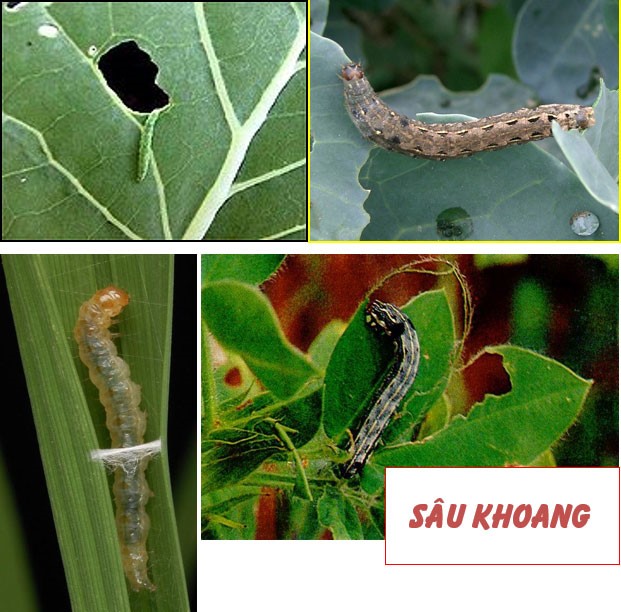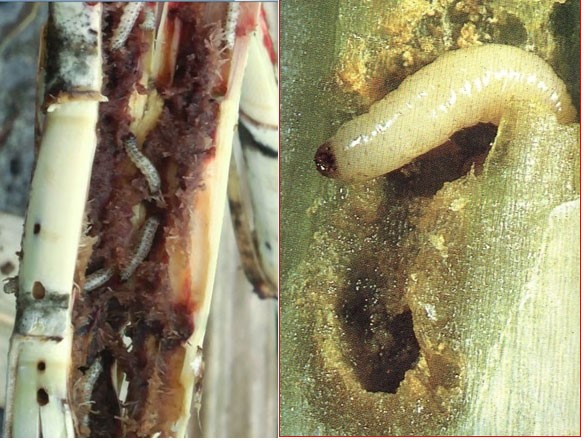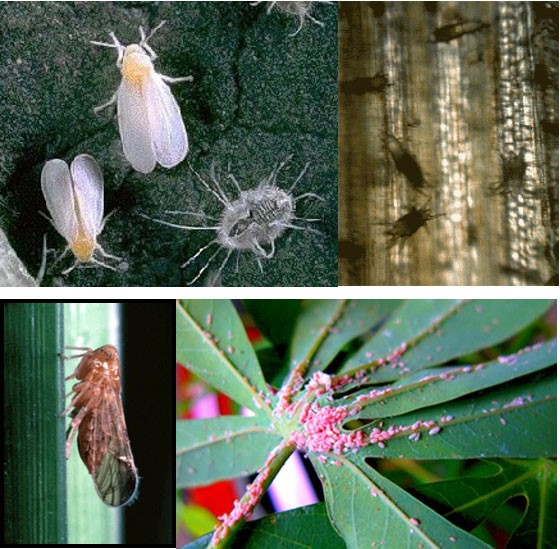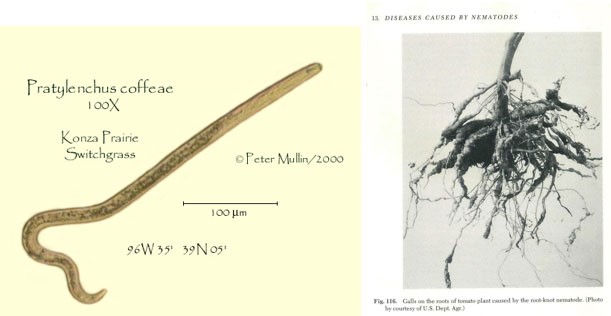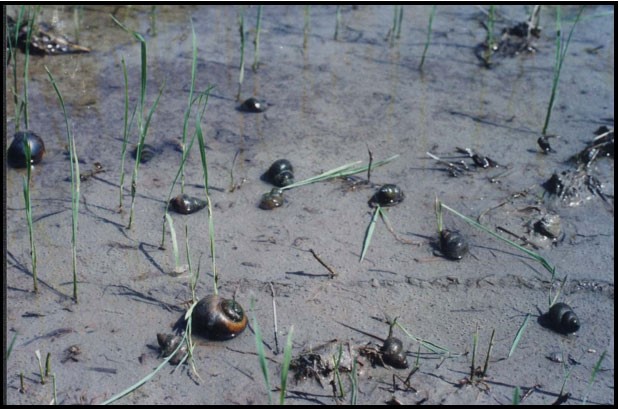|
SOME PESTS, SPIDERS, AND ANIMALS HARMFUL ON PLANTS
21/06/2023
SOME PESTS, SPIDERS, AND ANIMALS HARMFUL ON PLANTS In general, insects, spiders and plant pests are divided into the following groups: 1. The group of leaf-eating caterpillars Harm by using mouth to eat parts of plants, especially leaves, because the caterpillars are missing, the plants grow and develop poorly, leading to reduced yields, In addition, wounds caused by pests are also a gateway for fungi and other bacteria to enter and cause harm. The harmful feature of this group is that the damage often occurs quickly, causing damage on a large scale, but it is easy to detect and if detected early, it is relatively easy to prevent. On rice, damage is caused by groups of leaf-eating pests such as leaf rollers, army worms, etc. on vegetables, beans, melons such as diamondback moth ,bollworms, blackcut worms... on fruit trees, pepper, coffee such as leaf eating worms, orthaga thyrisalis... in order to prevent this object, it is recommended to apply integrated measures such as selecting suitable varieties, sowing, planting. suitable densities, not planting thickly, planting at the same time, applying fertilizer in a reasonable balance, not using too much nitrogen fertilizer, visiting fields regularly for early detection and timely prevention and treatment, can use pyrethroid based insecticides such as Carbamate, biological products such as Abamectin, Emamectin, organophosphate based (respecting the isolation time) have contact, toxic taste, and fumigant properties such as Sec Saigon 10, 25, 50EC, Sherzol 205EC, Comda gold 5WDG , Comda 250 EC, Sapen alpha 5EC, Sairifos 585EC, Sago super 20EC, Ga Noi 95SP…
2. The group of stem borers, fruit borers Causing damage by boring into the stems, branches, tops, flowers, fruits, roots. Due to being wormed inside, it affects the transport of water and nutrients, causing stems, branches, tops to wilt, flowers and fruits to fall, greatly and directly affecting crop yield. The characteristic of the stem borer group is that early symptoms are difficult to detect by eye, once shown to the outside, it is relatively difficult to prevent, costly and ineffective. Therefore, it is important to detect early by regular field visits for susceptible varieties and periods in which stem borers are common. On rice, it can be mentioned that stem borers, sheath borers... on fruit trees, prominent fruit borers, stem borers, branch borers, top borers..., on coffee such as fruit borers, longhorn beetles, stem borers, branches, on corn such as stem borers, corn borers, on vegetables such as bean borers, eggplants, tomatoes, etc., to prevent this object, it is necessary to apply the combined measures mentioned above, which focuses on plant breeding measures ,regular field visits are needed to detect early when new butterflies appear or young caterpillars are budding and timely treatment, if detected late, when the worms have burrowed deep inside, the control is less effective and costly in vain. Regarding products, it is necessary to use products with drainage, deep penetration or fumigant properties such as Diaphos 50 EC, 10G (Diazinon), Gà Noi 95SP, 4G (Cartap) or Sairifos 585EC ... if used early to control butterflies or young caterpillars can be used. foliar insecticides as mentioned above. Pay attention when using, you should pay attention to the isolation period.
3. Group of sucking insects This is the most common and diverse group of pests on many crops and also the most difficult to control, including hoppers, aphids, spider mites, thrips, etc. Harmful characteristics of the sucking group are often harmful. In the dry season, the weather is hot and dry, and on ssoft tissues such as young fruit, leaves, stems, and branches, in addition to sucking sap, harmful insects and spiders also inject toxins into the sting and help spread. viral disease. On rice, there are thrips, brown planthoppers, green planthoppers, mango hoppers , panicle mites, stink bugs, black bugs... on fruit trees: Red spiders, yellow spiders, Asian citrus psyllid , villous mites , zigzag leafhoppers, aphids, mealybugs, thrips ... on coffee: mealybugs, brown scale aphids, green scale aphids, aphids, mealybugs, red spiders... On pepper mealybugs, root mealybugs, aphids, sticky aphids , red spider ... on vegetables: Red spiders, thrips, aphids, mealybugs... To prevent this group, should also apply integrated measures, pay attention to the cultivation season and varieties. Regarding pesticides, it is advisable to pay attention to products with contact, systemic, deep penetration and fumigation that belong pyrethroid-based group, Carbamate, Organophosphate, and biosynthetic products such as Sairifos 585EC, Comda gold 5WG, Saromite 57EC, Butyl 10WP, Mipcide 20 EC, Sago super 20EC, 3G, Schezgold 500 WG, Sagometro 500WG, especially products that repel and change living habits such as laying eggs, sucking like mineral oil SK Enspray 99EC are very important. An important thing to note is that when spraying, pay attention to adjust the fine nozzle and spray a lot of water.
4. Nematodes Nematodes are common pests that are also found on many other crops such as pepper, coffee, fruit trees, vegetables, fruits, melons, beans, etc. easy to recognize and prevent early. Inverse nematodes, which are hard to see because they are small, live in the soil. When the plant is severely damaged, the symptoms will appear outside, then, prevention and treatment is less effective and expensive. Nematodes are very small in size, difficult to see with the naked eye, most are worm-shaped, a few are round or oval. The number of species of nematodes is estimated at 1 million species, however, only about 28,000 species have been described. Nematodes cause damage by injecting needles into plant tissues to suck up water and nutrients. Nematodes live and cause damage mainly in the soil, but there are types that can cause damage on stems, leaves.... On the roots, the typical symptoms are the roots with nodules, crooked roots, poor growth, caused by nematodes, when sucking nutrients, they also pump toxins into the roots, causing the roots to become blocked and swollen. nodules cause the function of absorbing water and nutrients to be affected, making the plant stunted… .. in addition, wounds caused by nematodes sucking on the roots, also create conditions for harmful bacteria and fungi in the soil to penetrate and cause damage, causing more severe damage, often symptoms caused by nematodes are mainly expressed in rainy season, especially in the middle or the end of the rainy season, at the beginning of the dry season, because at this time the soil is dry and the plants lack water. When there is adequate water and fertilization, the plant tends to recover. To prevent nematodes, it is necessary to apply integrated measures such as (1) Dig drainage ditches to limit the spread of nematodes, (2) increase liming (Because nematodes like acidic soil, low pH), (3) increasing the application of decomposed organic fertilizers (Because decomposed organic fertilizers contain many beneficial microorganisms and nematodes), (4) planting plants that repel nematodes such as marigolds, sesame, sunflower…(5) Finally, if the nematodes cause damage on a large scale, it may be necessary to use chemical products such as Saburan 10 H, Diaphos 10G… note that nematode killers are often very toxic, so be careful when use and should pay attention to respect the isolation period.
Pratylenchus on coffee 5. Golden Apple Snail. This is an exotic pest, originating from Brazil, introduced into Vietnam around 1985, the first damage was recorded in 1994 in Kien Giang and Ho Chi Minh City. Snails can not live only in fresh water conditions, acid sulphate fields pH < 4 or salinity > 0.6%. GAS causes damage by biting off the seedling from sowing until about 20 days later. Seeded fields are more damaging than transplanted fields. GAS has distinct male and female, male/female ratio is about 3/7. The life cycle (spawning – pairing – reproducing) is about 3 months, but snails can live up to 3 years. Eggs are laid on high, the nest is bright pink, when it is about to hatch, it is pale pink, 1 eggmass has about 300 eggs, hatching rate 90-95%. On average, 1 female GAS can lay 500-1000 eggs/month. GAS lives and causes damage mainly in water, however snails can also live on land, in adverse conditions (dry) snails bury themselves in the ground, when conditions are favorable (fields with water) snails emerge to bite back again. OBV can cause damage around the clock, but usually causes damage mainly in the afternoon - evening. GAS natural enemies are ants, birds, rats, ducks, snakes, fish... and humans To prevent and treat OBV, it is necessary to apply a combination of measures, which must be done continuously, widely and early before the season begins. Measures include placing nets at culverts, drains, dredging, catching snails by hand, planting stakes to collect eggs, plowing and harrowing, plowing deeply, bringing water into the field early (before sowing) to lure snails out. then kill, after sowing do not put water in the field soon, just keep the field moist enough, use snail killers such as DIOTO 250EC, Dioto 830WG (mixed with water spray) or Tatoo 150B, Bosago 12AB (spray) ... after harvest (if condition permitted) ) release ducks to eat snails to limit the next litter. It should be noted that if the treatment is with chemical products, it should follow the instructions on the label and can add a little molasses to increase the attractiveness.
. 6. Harmful Rats Rats are the most important pests in rice field , vegetables and fruit trees. Rats have not very good eyes, can not see far, can not distinguish colors, in return rats have the ability to perceive smells and taste of food very well. Rats are very sensitive, very agile, climb, dig quickly, swim easily, and destroy mainly at night. Rats do not have fangs, but have strong and movable incisors. Rats are suspicious, or suspicious of strange places, strange foods, often live in burrows, especially on the banks of rice fields. When the rice is ripe, the rats leave their burrows and live in the fields, sometimes making nests in the rice plants. Rats do not like water, so any year there is a severe drought, that year there are many rats. When rats are immature, it is difficult to distinguish male and female rat by eye. In the field when there is a lack of food, due to disease or overcrowding, rats will migrate to other places. The lifespan of rats is about 1 year, in which female rats live longer than male ones. Rats are omnivores, eating mainly green plants, in addition, rats also eat fish, snails, yellow apple snails, crabs... … Maturity time of the mouse is quite early. After giving birth, about 1-2 months later, the rats will pair again to give birth to a new litter. On average, rats give birth to 4-6 litters a year, each litter has an average of 5-12 babies. Rats are mainly harmful at night. In the field, rats mainly damage in the booting-flowering stage. If damaged early, the rice can recover, creating new tillers, but ripening will be uneven. If damaged late, the rice will not recover, will not yield. Rats have many natural enemies such as snakes, pythons, birds that hunt rats, cats, dogs, diseases... but the most important enemy of rats is humans. Rat extermination should be done early in the crop, done simultaneously, continuously, evenly and with the participation of the community. Treatment: (1) Determining the appropriate season, planting and harvesting should be done at the same time, (2) Should not plant too many crops in the field, (3) Good field hygiene, (4) Protect the natural enemies of the crop. Rats, (5) Crop traps: In each field, select a field, on which to plant early and fragrant rice to attract rats, the trap fields are covered with nylon fences, and in the fields, cages are placed to catch rats. It is necessary to visit the field regularly to pick up rats, snakes, etc. to get into the cage and repair when necessary, (6) Use water to limit and kill rats: If possible, keep the water level in the field high in the booting-flowering stage to to limit rats from nesting along the shore, (7) Organize hunting: by many methods such as burrowing, trapping, smoking, using hunting dogs or using plows to catch rats, (8) Methods of fumigation to get rid of rats using gas of calcium carbide, sulfur, burning straw mixed with dried chili peppers, sulfur fumigation is also quite effective, and inexpensive, and does not cause pollution…(8) Poisoning: Zinphos 20% according to the recommended dose. It is necessary to do it for a few days in a row, then collect all the poison, take it away and destroy it, (9) Catch rats for food: This is a very effective way of getting rid of rats, and significantly improves income. Rat meat is very delicious, has high nutritional value, and is a valuable source of additional protein for low-income rural areas. |
To prevent, in addition to plowing and burying weed seeds, collecting weed stalks and stumps left after tilling the land to burn, not letting weeds produce seeds in production fields, etc., the use of chemical products is still a measure. optimal because of its ability to thoroughly kill weeds, reduce labor and take advantage of more time than manual weeding.
Miner has the scientific name Phyllocnistis citrella Staint., family Phyllocnistidae, order Lepidoptera. The miner occurs in many countries in the tropics and subtropics. The main host of the miner is the citrus family - Rutaceae. In addition, the miner also attacks mangosteen and some other plants.
Adult is a small planthopper, with a body 2-3 mm long, the whole body is ash gray, slightly greenish, the wings are opaque with many small brown spots.Eggs are oval, 0.3 mm long, have a pointed end and are attached directly to the leaf surface, leaf axils.
Green bugs specialize in the fruit of citrus groups (oranges, tangerines, lemons, grapefruits, kumquats...), some people call them orange bugs, or orange suckers. Their scientific name is Rhynchocoris poseidon or Rhynchocoris humeralis.
In Vietnam, yellow leaf curl disease is very common on papaya trees, especially the disease is often severe in areas of high and continuous planting, areas with hot and arid climates. The disease has significantly reduced the yield and quality of papaya. Gardens that are infected early when the plants are young may not yield. However, up to now, many gardeners still do not know the cause and how to fix it.
Spider mites are common pests on citrus trees, especially in hot and dry climates that are suitable for spiders to grow and cause severe damage.The group of harmful spiders is usually very small in size, unlike the natural enemy spiders.
This group includes species that are generally very small in size, causing damage by sucking plant sap (on leaves, fruits, branches, stems).
There are many species of mealybugs present on the group of Oranges,Tangerines,Grapefruits and Lemons (Citrus), which can be divided into 2 groups:
+ Group of sticky mealybugs with common varieties such as Lepidosaphes, Aonidiella, Coccus and Saissetia.
+ Group of flower mealybugs with common genera and species such as Pseudococcus, Planococcus and Icerya purchasi.
Dry branches and berries disease often appear to be common damage on coffee gardens during the rainy season. The disease causes death of branchs, dry fruit, severely affects the canopy structure and coffee yield if not paid attention to prevention.
Pink disease commonly causes diseases on rubber plantations in the rainy season, especially on garden from 4-8 years old. This year, rubber has to go through a period of severe drought, weakening the tree, so now in tnshe rainy season it is easy to get infected. Therefore, it is necessary to pay attention to good management to avoid affecting the garden.
In recent years, the area of citrus has been expanded because it is a fruit tree with high economic efficiency. However, in order to sell at a high price, not only in quality but consumers also require the external beauty of the fruit, so pest management on citrus is a matter of great concern to farmers. The hot season is a favorable condition for thrips to develop and cause damage, affecting the commercial value of fruit.
- Headquarters
- SAIGON PLANT PROTECTION JOINT STOCK COMPANY
- RQ 1, Nguyen Van Quy St., Tan Thuan Ward, HCM City
- Tax code: 0300632232
- Tel: (028) 38 733 295 - 38 732 077
- Fax: (028) 38 733 003 - 38 733 391
- Website: www.spchcmc.vn - Email: info@spchcmc.vn
- SAIGON PLANT PROTECTION COMPANY
- SAIGON PLANT PROTECTION JOINT STOCK ENTERPRISE
- Lot C1-C3 Hiep Phuoc Industrial Park, Hiep Phuoc Commune, HCM City
- Tel: (028) 3873 4089 - Fax: (028) 3873 4086
- Affiliated Unit
-
- Quick Links
- Home
- About us
- Career Opportunities


